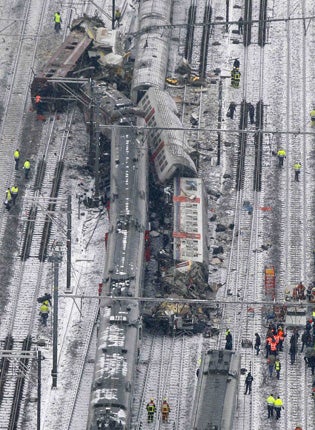An accident that should not be possible on a modern railway track

Crash investigators will want to know how two Belgian commuter trains came to collide head on – something that should be impossible on a modern railway.
Although a senior Belgian official suggested that one driver had passed a red light, that should not, in itself, have allowed two trains to approach each other on the same track.
The old railway practice of dividing dual-track lines into "up" and "down" disappeared long ago. Complex, computerised signalling systems now allow many tracks to become bi-directional: in other words capable of being used by trains heading in different directions at different times.
This is especially useful in crowded commuter networks, such as the tangle of lines surrounding the Belgian capital. Both sets of tracks can be used for trains heading into the city in the morning and out of the city in the evening. For two trains to collide head on, there must usually be a combination of human failure, such as driver error, and a serious technical fault or breakdown in the signalling system .The most murderous recent head-on collision on Britain's railways – the crash at Ladbroke Grove outside Paddington in October 1999 which killed 31 people – was found to have been caused by just such a combination of circumstances.
If a driver passes a red light, he or she receives a warning signal in his cab. If the driver fails to acknowledge the signal, the train should stop automatically. Belgian railways, which have an excellent safety record, are fitted with a more elaborate version of this safety system than the one found on most lines in Britain. Although the circumstances of yesterday's crash remain unclear, the likelihood is that some sort of technical failure in the signalling system allowed the two trains to hurtle towards each other on the same line. Belgian television said yesterday that an "electrical fault" may have caused a signalling error.
Even so, the driver of one of the trains must also have passed a red light and should have been aware that he was on the wrong track.
Both trains were on commuter runs on a south west to north east axis, passing through the centre of Brussels. One had started its journey in Louvain, north of the capital, and was heading for Braine-le-Comte in the outer south west suburbs. The other train had started in Quiévrain, south west of the city and was heading, via Brussels, for Liège in eastern Belgium. According to first reports, it was the southbound, Braine-le-Comte train which was on the wrong track when the accident happened at about 8.30am yesterday.
Join our commenting forum
Join thought-provoking conversations, follow other Independent readers and see their replies
Comments